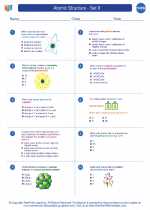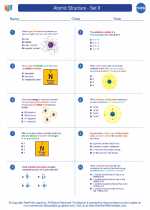Atlantic Ocean
The Atlantic Ocean is the second largest of the world's oceans, covering approximately 20% of the Earth's surface. It is bordered by the Americas to the west and Europe and Africa to the east. The Atlantic Ocean is a crucial part of the global circulation system, influencing weather patterns and supporting a diverse range of marine life.
Key Facts
- Location: Between the Americas to the west and Europe and Africa to the east
- Size: Approximately 41,100,000 square miles (106,460,000 square kilometers)
- Depth: The average depth is around 12,000 feet (3,660 meters)
- Marine Life: The Atlantic Ocean is home to a wide variety of marine species, including fish, mammals, and invertebrates
Study Guide
When studying the Atlantic Ocean, it's important to focus on the following key areas:
Geography
Understand the location and size of the Atlantic Ocean, as well as its major geographical features such as the Mid-Atlantic Ridge and the continental shelves.
Oceanography
Explore the ocean's currents, tides, and climate patterns, and how they impact the regions bordering the Atlantic Ocean.
Marine Life
Learn about the diverse range of marine species found in the Atlantic Ocean, including the ecosystems they inhabit and the conservation efforts aimed at protecting them.
Human Impact
Investigate the human activities that affect the Atlantic Ocean, such as fishing, shipping, and pollution, and consider the potential consequences for the environment and economies of the surrounding regions.
By comprehensively studying these aspects of the Atlantic Ocean, you can gain a deeper understanding of its significance in the global ecosystem and human society.
[Atlantic Ocean] Related Worksheets and Study Guides:
.◂Chemistry Worksheets and Study Guides High School. Atomic Structure - Set II

 Worksheet/Answer key
Worksheet/Answer key
 Worksheet/Answer key
Worksheet/Answer key
